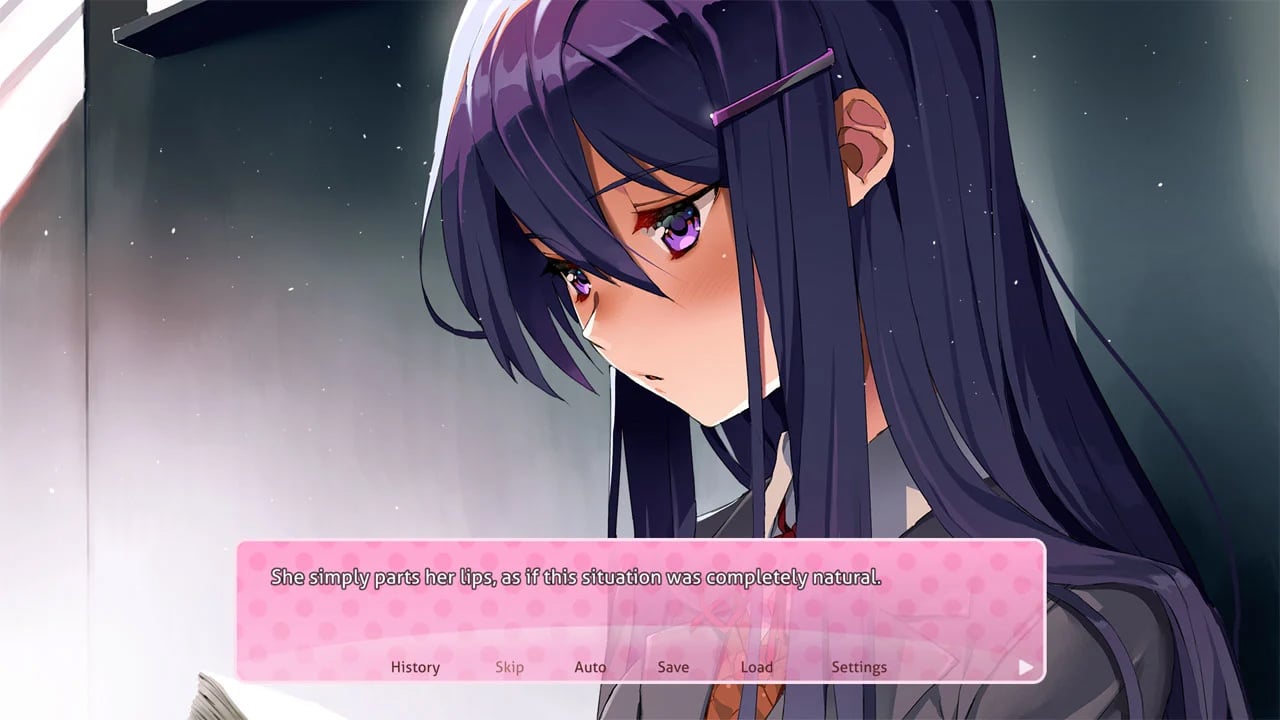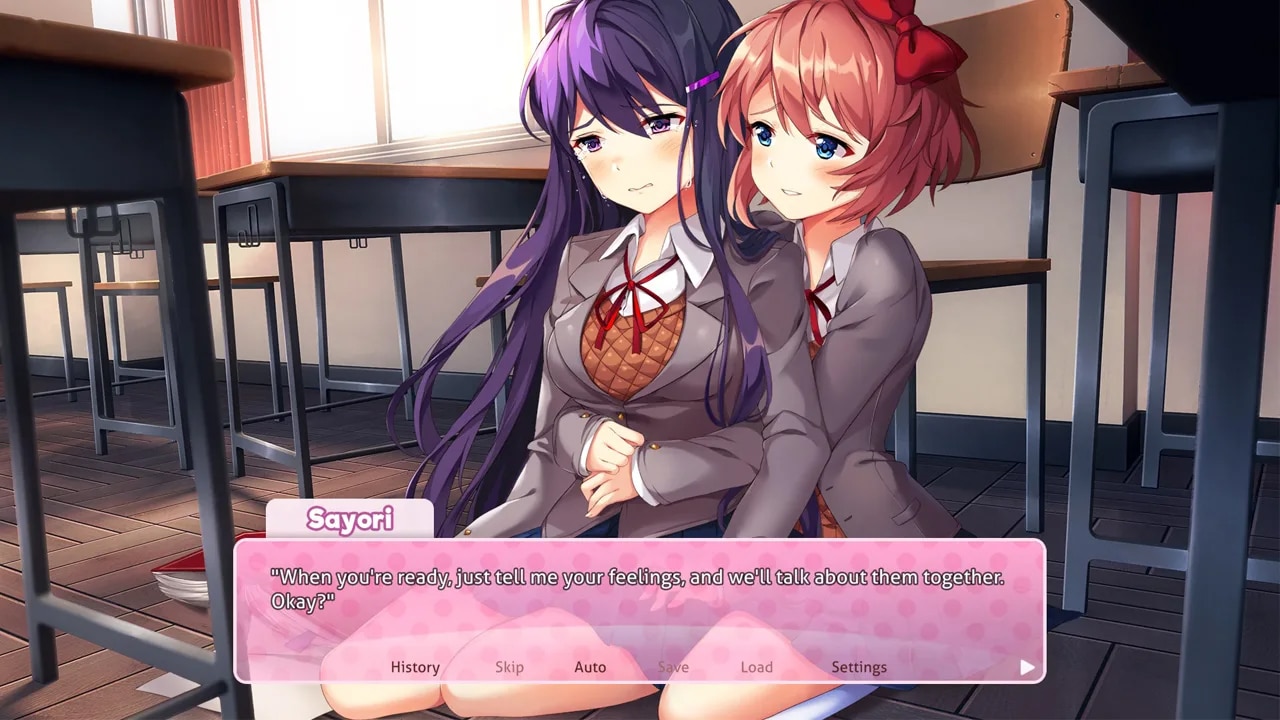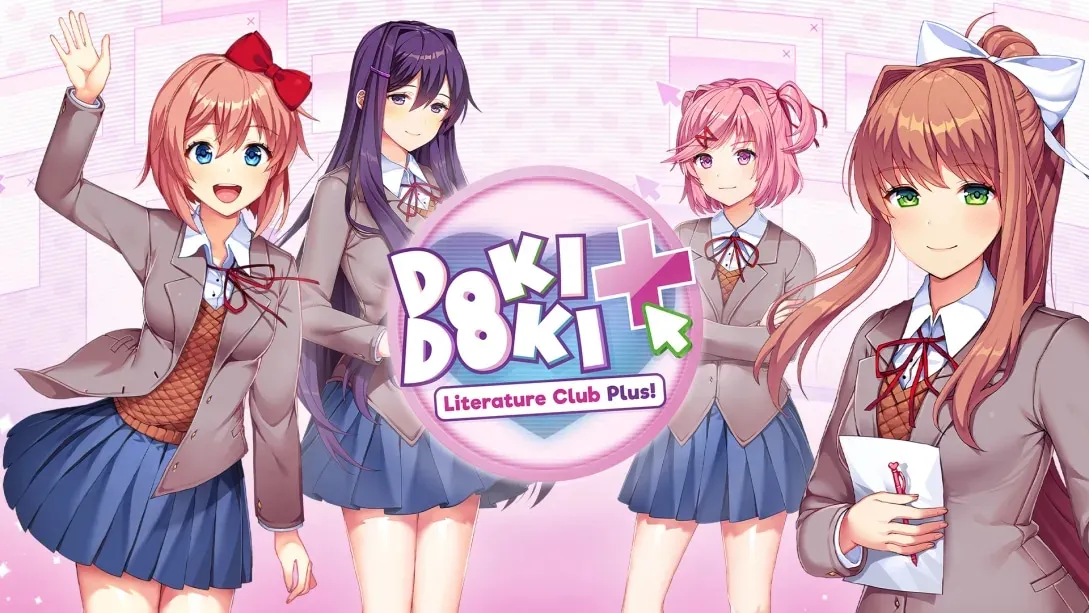This article contains spoilers for Doki Doki Literature Club Plus (DDLC+) and its Side Stories.
Doki Doki Literature Club Plus! is unsettling. Anyone who played the original version can surely attest to its ability to disturb by subverting convention and playing with the fourth wall. The recent re-release adds hours of new content that fills in the narrative background without trying to repeat past tricks. Instead, the new DDLC+ Side Stories play out as straightforward visual novel narratives, with you as the player providing all of the discomfiting undercurrent.
Not for nothing is DDLC considered a psychological thriller. Its cutesy aesthetic belies a troubling narrative that plays up mental health issues for shock value. To the developers’ credit, they try to justify the extreme portrayals through the game’s fourth wall-breaking meta-awareness of its constructedness, but the shocks are too shocking. Heightened as the depictions of mental illness are for most of the player’s time with the game, they lack the nuance to seem truly earnest. On one hand, that’s part of what makes DDLC so memorable; on the other, it finds a home within the broader social contexts of stigmatization and stereotyping of mental illness. The game may be widely loved, but that doesn’t make it blameless.
DDLC+ Side Stories were an opportunity for redemption – an opportunity grasped at but not quite reached. Side Stories comprise half a dozen new stories that explore the origins of the Literature Club and the relationships between the four girls in it before the player came onto the scene. Taken on their own, these snippets offer gentler portrayals of mental illness. They feel honest. Their depictions feel like statements of genuine understanding for the struggles against depression, anxiety, intrusive thoughts, or trauma.

The thing is… the Side Stories don’t exist in isolation. They are tucked within the broader package of DDLC+ and gated behind multiple playthroughs of the main story. While games often lock additional content behind progression or particular achievements, the effect of doing so is different here.
DDLC doesn’t just break the fourth wall with a casual wink towards the player a la Metal Gear Solid; it shatters the fourth wall. You are positioned as you – the player rather than the player-character – and you become the direct addressee of Monika’s obsession. You go through the motions that the game seems to demand: composing poems, making choices. But ultimately, none of that matters because Monika is aware of her existence within a video game. This insight enables her to manipulate the objective world around her, ramping up the negative personality traits of the other characters to achieve the happy ending she is otherwise incapable of having. The concord between player and game doesn’t get to be re-erected in the wake of that.
Likewise, the metafictional framing of DDLC+ ensures you can’t forget that this is just a narrative. You are seeing only what the creator of that narrative wants you to see. The packaging of the game reinforces that sensation. As you progress through the main game and Side Stories, you unlock email messages passing between members of the fictional MetaVerse Enterprise Solutions team, which further position DDLC as a fiction within a fiction.

With the implicit contract of fiction broken like this, the player can’t not view the ordinariness of the DDLC+ Side Stories as suspect. In the game, as in reality, your subjectivity is determined by what you have seen, by the unexpected rewriting of the game’s rules, by the way the story shifts to accommodate what should be impossible changes, by the self-awareness of Monika, and by the extreme portrayals of mental illness.
No matter how earnest the Side Stories are, the metafiction imbues them with a sense of unease. You can’t help but expect everything to go off the rails. After all, the main game at first appears as a straightforward dating simulator. To expect the Side Stories to follow its trajectory of crashing convention seems reasonable. The only question is “how?” So, you wait. You watch. You read. You follow the tales of how these girls came together and overcame their distrust and dislike of one another. You wait some more.
Constantly waiting for the other shoe to drop inhibits your ability to enjoy the story for what it appears to be. Dread always underpins the bittersweetness. That leads to the sense of disquiet experienced when playing through the Side Stories. The differing subjectivities of the girls remain on display, but it turns the lens of analysis onto you. The Side Stories rob you of agency.
In fact, they go further: The player doesn’t exist. Except you do. And you know you do because the game has already admitted you do. You never appear, though. The stories end, the credits roll, and you’re thanked for playing a game about literature and friendship – there is no shoe drop.
On the surface, literature and friendship do seem to be prevailing themes. Certainly, the Side Stories explore the foundations of friendship, and on a slightly deeper level, the metafictional quality of DDLC offers an intriguing interrogation about literature (and ludoliterature) as an artifice.
However, it more prominently examines the line between objectivity and subjectivity. That permeates the entire package. That means nothing can be trusted in DDLC+.
The disquiet comes from not mattering, where once you did. The Side Stories reposition you not as the player but as a stand-in for the Monika waking up to the realization that DDLC is a fiction in which she has no power and no hope of a happy ending. Except, unlike Monika, you cannot make the game your own.
On reflection, that’s the truly remarkable, memorable thing about Doki Doki Literature Club Plus! It has an incredible ability to get under your skin. It preys on the belief that a text does not exist without a reader – it preys on the inclination to center ourselves as the object of our reality – and uses that to play us as much as we play it.






Published: Jul 21, 2021 11:00 am